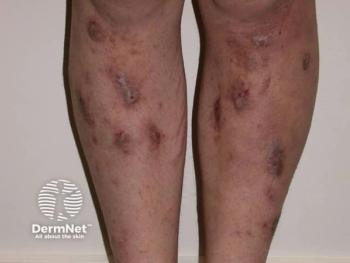
Increase revenue by implementing slide prep lab in-house
The slide preparation lab seems a logical extension of dermatology practice, yet few dermatologists tap into this revenue-producing option. Adding a histopathology component to your practice generates long-term revenue to help make up for dwindling reimbursement and aesthetic devices.
Key Points
Ms. Ellzey, whose company TC DermPath specializes in creating turnkey prep labs in dermatology practices, says today's market forces make bringing traditionally outsourced lab prep services in-house a savvy financial decision.
"No. 1, we are in a recession, and dermatologists have not gotten a raise from Medicare for 10 years," Ms. Ellzey says.
"What any smart businessperson would do is figure out how to either decrease their overhead or increase the services they provide. Why not capture revenue that you are already generating but, in essence, outsourcing?" Ms. Ellzey says.
Most dermatologists, Ms. Ellzey explains, send skin tissue to outside labs. The labs prepare the slides and either the lab expert or the dermatologist sending the slides reads them.
"Average reimbursement in the U.S. for what we call the 'professional component of pathology,' which is the physician reading the slide, is about $35. The more profitable aspect is the making of the slide, which reimburses from $60 to $75," she says. "What I recommend is that you capture that revenue - keep it in-house - by setting up your own lab."
How to get started
Setting up an in-house slide prep lab is a process. "In essence, you are setting up a (Clinical Lab Improvement Amendment) CLIA-certified lab," Ms. Ellzey says.
Some tips to get you started include the following:
1. Determine if it would be in your best interest to set up an in-house lab. Ms. Ellzey says dermatologists who are the best candidates for these labs generate at least 4,000 specimens a year. The more specimens, the more profit. For example, Ms. Ellzey estimates that practices that generate between 8,000 and 10,000 slides a year will not only recoup their investment in the lab in six months, but will be profitable thereafter.
2. Make sure you have space in the practice to devote to the lab. Dermatologists need only about 200 square feet for the lab, but it has to be lab-only space.
3. Build out that space to meet local building codes.
4. Configure the lab for workflow and safety. Know equipment requirements.
5. Don't buy what you don't need. Skin tissue labs are simpler, requiring less complicated equipment than many other types of labs.
Take into consideration such options as automated versus manual equipment. "If you are generating 10,000 to 15,000 specimens, why not make the investment of automated equipment upfront? If you're closer to 4,000 slides, why not go with manual, and as your lab grows, then you can change that equipment for the more high-tech and faster equipment," Ms. Ellzey says. "You also have the choice between used and refurbished equipment."
6. Search for optimal financing. "We have set it up where the doctors do not even have to make their first payments on the equipment until the labs have been going for six months. For some practices, that already means they are profitable and can almost pay off the lease," Ms. Ellzey says.
7. Know manual requirements. You will need a CLIA manual, a medical director's manual and a safety manual. CLIA is a federal law that certifies any facility that does testing on human tissue. Your goal in launching this lab is to ready it for CLIA inspection.
8. Understand staffing requirements. Board-certified dermatologists, because of their training in dermatology and pathology, can serve as medical directors of these labs. Dermatologists who invest in these labs will have to hire histotechs to prepare the slides. Mohs surgeons already employ histotechs, so this is one step they can skip.
Other considerations include planning to quickly send specimens to the central office (the lab location) in a multi-site practice. And depending on how long it takes to build out space, Ms. Ellzey says that her group can have a turnkey lab running in three months.
"I was writing a manual (about lab set up for dermatologists), but once I found out how much need there was for this, I put together this consultant team, TC Derm Path. Some people think they can do it on their own. It is like anything else: You can do it on your own, but I would suggest spending the extra money to get the expert care," she says.
Newsletter
Like what you’re reading? Subscribe to Dermatology Times for weekly updates on therapies, innovations, and real-world practice tips.


















